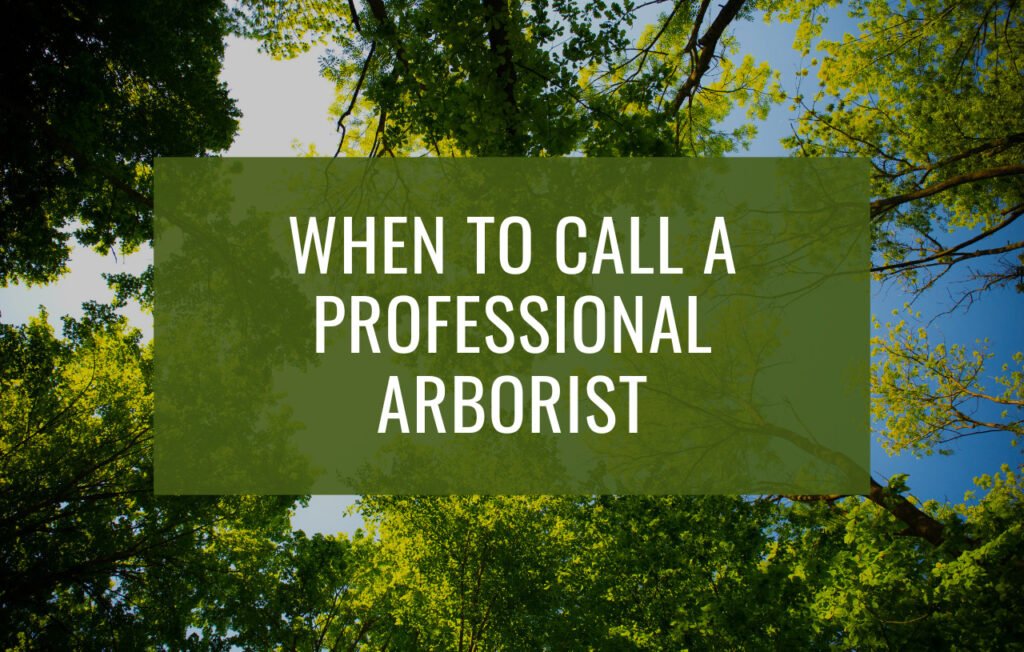When to Call a Professional Arborist
The majesty of a towering tree, the shelter it provides to countless creatures, and the aesthetic and environmental benefits it offers are all reasons to love and care for these arboreal wonders. However, trees, like all living things, require regular care and can sometimes fall prey to disease, infestation, or simply the ravages of time. In such cases, the services of a professional arborist can be invaluable.
This guide will explore several situations when it’s wise to call a professional arborist, to ensure the health and safety of both your trees and your property. Let’s delve into the first few reasons:
- Routine Tree Health Inspections: While it’s easy to appreciate the beauty of a tree, determining its health isn’t always straightforward. Regular inspections by a certified arborist can help identify potential problems before they escalate. As quoted by the Tree Care Industry Association (TCIA), “an ounce of prevention is worth a pound of cure.” Routine inspections are essential, they can uncover potential issues that might not be visible to the untrained eye, ensuring your trees remain healthy and vibrant.
- Large Tree Removal: While it may seem like a straightforward task, removing large trees can be hazardous. According to the Centers for Disease Control and Prevention (CDC), hundreds of deaths occur each year due to tree-related accidents. This number underscores the importance of entrusting such tasks to professional arborists, who have the required training and equipment to carry out the job safely. Engaging a professional arborist for tree removal isn’t just about preserving the health of your trees, it’s about ensuring your safety.
- Planting New Trees: Planting a tree might seem simple enough, but there’s much more to it than digging a hole and plopping in a sapling. Various factors like the soil type, local climate, tree species, and even the time of year can impact the survival and growth of a new tree. Professional arborists can guide you in choosing the right tree for your location and ensure it is planted correctly, setting it up for a healthy life. Right tree, right place! An arborist’s guidance can make the difference between a thriving tree and one that struggles to survive.
- Professional Tree Pruning: Tree pruning is more than just a cosmetic procedure. When done correctly, it can enhance the health of a tree by removing dead or diseased limbs, improving the tree’s structure, and encouraging growth. This procedure requires knowledge of tree biology, making it a task best left to professionals. Improper pruning can cause lasting damage to a tree. Rely on a professional arborist for a job well done.
- Wildfire Prevention: If you live in an area prone to wildfires, an arborist can help create a defensible space around your property, reducing the risk of fire damage. They do this by removing deadwood, thinning dense canopies, and choosing fire-resistant species. The role of an arborist extends beyond tree care to safeguarding homes and communities from the devastating impact of wildfires.
- Cracks or Splits in the Trunk: Not all tree injuries are immediately life-threatening. However, cracks or splits in the tree trunk can indicate structural instability, putting the tree at risk of failure. A professional arborist can evaluate the tree’s condition and determine the best course of action. A crack in the trunk doesn’t always spell doom. An arborist can provide the best prognosis and treatment options.
- Dead or Dying Branches: Dead branches are not only unsightly, but they’re also potentially hazardous. These branches can fall unexpectedly, posing a risk to property and personal safety. Regular inspections and pruning from a professional arborist can help prevent such dangers. Prompt removal of dead or dying branches ensures the safety of your property and the health of your trees.
- Discolored or Wilted Leaves: If your tree’s leaves appear discolored or wilted, it might be a sign of disease or pest infestation. Arborists are adept at diagnosing these problems and proposing appropriate solutions. Changes in leaf color and texture may signify a problem under the bark. A professional assessment is key to timely treatment.
- Fungus Growth: The presence of fungus on your tree could indicate decay or disease lurking within. An arborist can identify the type of fungus and assess the extent of any potential internal damage. Don’t let fungi fool you – they can be both beneficial and harmful. Consult an arborist for accurate identification.
- Peeling Bark: A tree’s bark serves as its protective skin, and peeling bark can be a sign of insect infestation or disease. This condition should not be overlooked, and a certified arborist should be consulted for diagnosis and treatment. Peeling bark is a cry for help from your tree. An arborist can interpret this signal and administer the necessary care.
Whether it’s a regular health inspection or an emergency, a certified arborist is your tree’s best advocate. They possess the knowledge, skills, and tools to take care of your trees and ensure they remain an asset, not a liability. If you notice any of these signs, calling a certified arborist is a good idea. They can help save your tree, advise if a sick tree can be saved, or determine if it’s in danger of spreading its sickness to other trees or damaging your property. So remember, when in doubt, always consult a professional arborist.
